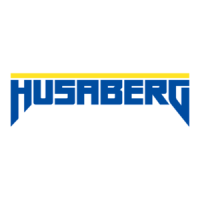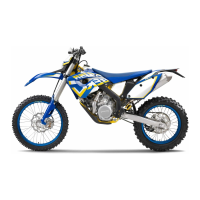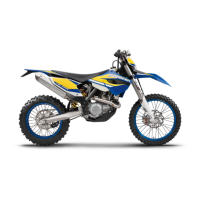What to do if my HUSABERG TE 300 EU Motorcycle engine turns but does not start?
- CChristopher CummingsAug 16, 2025
If your HUSABERG Motorcycle engine turns over but fails to start, there could be several reasons. First, ensure you're following the correct starting procedure. If the motorcycle has been stored for a while, empty the carburetor float chamber to remove old fuel. Check for any interruptions in the fuel feed by inspecting the fuel tank breather and cleaning the fuel tap. Also, the spark plug may be oily or wet, in which case you should clean and dry it, or replace it if needed. The electrode distance of the spark plug may be too wide, so adjust the plug gap. Finally, check the kill switch, clean the connector and treat with contact spray. Also check/set the carburetor components and check the ignition system.




